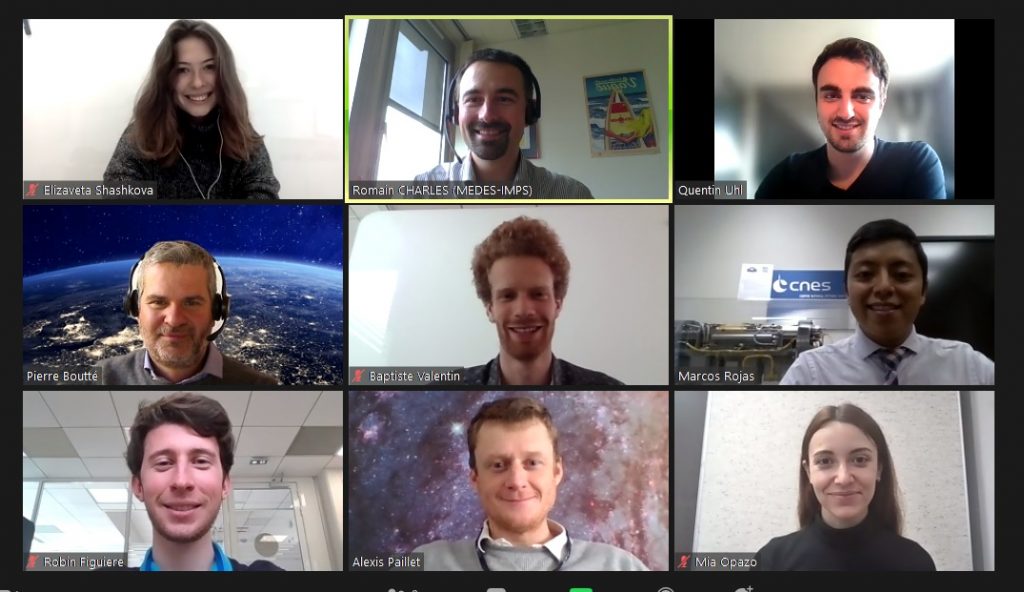The work of Spaceship members includes developing pioneering technologies and concepts, like the lunar dust simulant EAC-1, and researching in-situ resource utilisation (ISRU) techniques for sustainable living and exploration on the Moon and distant planets. ISRU involves using mainly local resources, to avoid having to transport all the supplies from Earth.

3D printed parts from lunar regolith simulant EAC-1, screw (50%) and gear (70%). ESA -A.Hand
Following the creation of Spaceship ECSAT at ESA’s European Centre for Space Applications and Telecommunications (ECSAT) in Harwell, UK, in 2016, the Spaceship FR initiative was launched in 2018. Based at French space agency CNES’ site in Toulouse, France, it is now the newest member of this innovative network.
Building a Moon base prototype
“One objective of the different Spaceship sites is to work on topics of mutual interest and collaborate on new ideas and concepts, to raise their Technology Readiness Levels (TRL),” explains Spaceship EAC project manager Aidan Cowley.
Spaceship EAC – studying lunar regolith. ESA
In this context, Spaceship FR aims to build a hub for autonomous research and operations that simulates a potential lunar base, operating with its own resources and production cycles.
“This hub could be completely disconnected from electricity and water grids, and everything should be completely recycled – like a Moon base, only on Earth,” explains Spaceship FR project manager Alexis Paillet.
The base will be built progressively between 2021 and 2023 to house various technology demonstrators that focus on sustainable life support systems, such as greenhouses for self-sufficient food production, and fuel cells or hydrogen technologies for energy supply.

Representation of Spaceship FR at CNES in Toulouse. CNES
Strong cooperation between the Spaceship locations and a network of associated industry and laboratories will allow the team to build on existing technologies and identify opportunities to create new ideas and technologies.
“We all share a passion for creating something new and following the common overall goal of advancing exploration on the Moon,” explains Romain Charles, supporting engineer at Spaceship FR.
“We are all going in the same direction because we all want to see an autonomous base in space. This means exploring the most efficient ways to recycle, reduce waste, and control energy, which we can also benefit from on Earth,” he adds.
Growing together
All three Spaceships aim at exploring project topics together, and learning from one another as they share resources and facilities.
“Exchanging team members between the different sites and teams is also in the planning,” Aidan says.
“All Spaceship initiatives represent valuable opportunities to engage in exploration in a pragmatic, hands-on way and also help each organisation or site adapt to the new exploration landscape,” he adds.
Spaceship EAC and ECSAT are both based at ESA sites and have already worked together to identify new regolith simulant material, machine learning and artificial intelligence (AI) projects. A CNES-based Spaceship opens up new views and ideas for the team, as well as insights into their network.

Spaceship FR team (May 2021). CNES
Romain can’t wait to see the initiatives grow together into something impactful and positive for the future of human and robotic space exploration.
“There is so much potential that the most painful thing is not to be able to move faster. To just welcome everybody and work faster on all of that,” he says.
“So far this coordination has been excellent. When people are motivated by exploration, it is easy to ensure that all our work synergises well,” Aidan adds.

Spaceship EAC team (May 2021). ESA
Learn more about the Spaceship EAC programme here
Meet the students and interns of Spaceship EAC here



